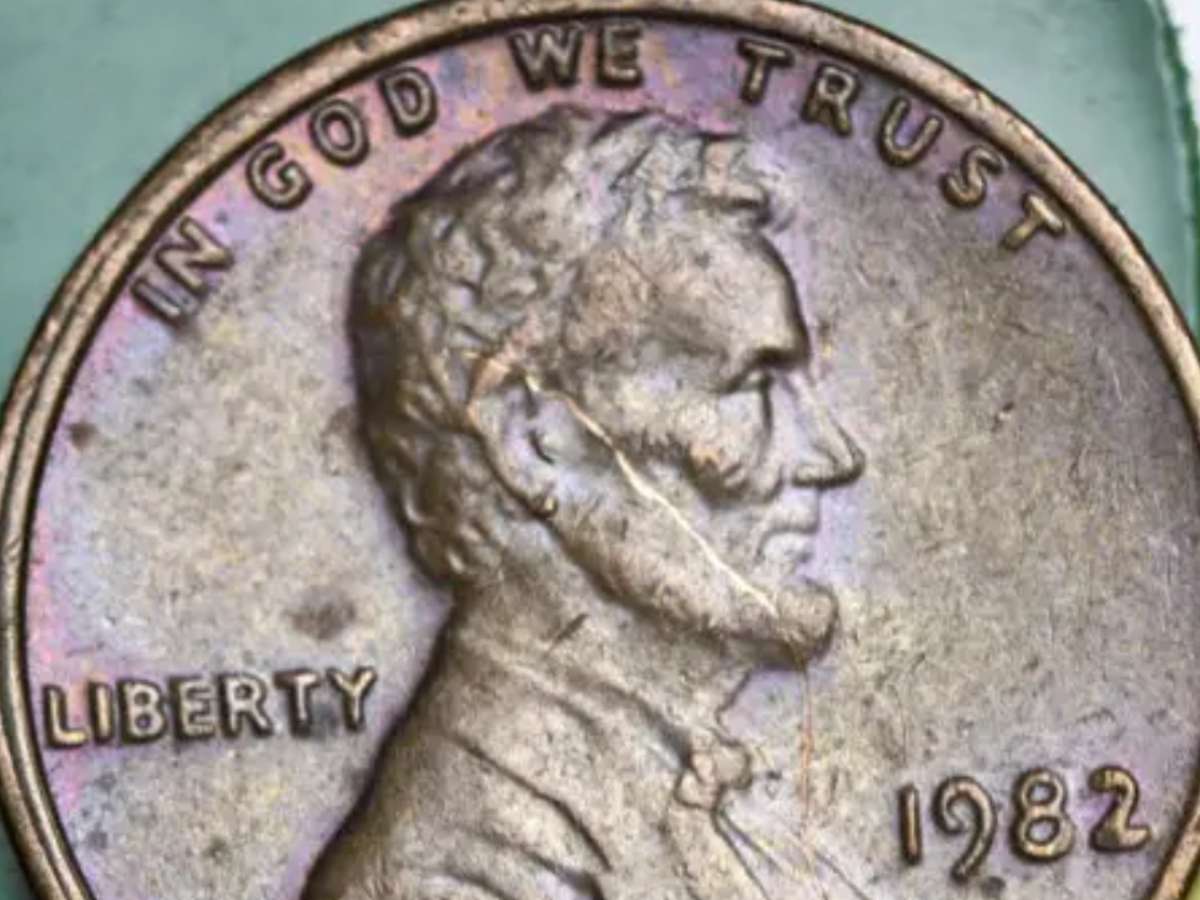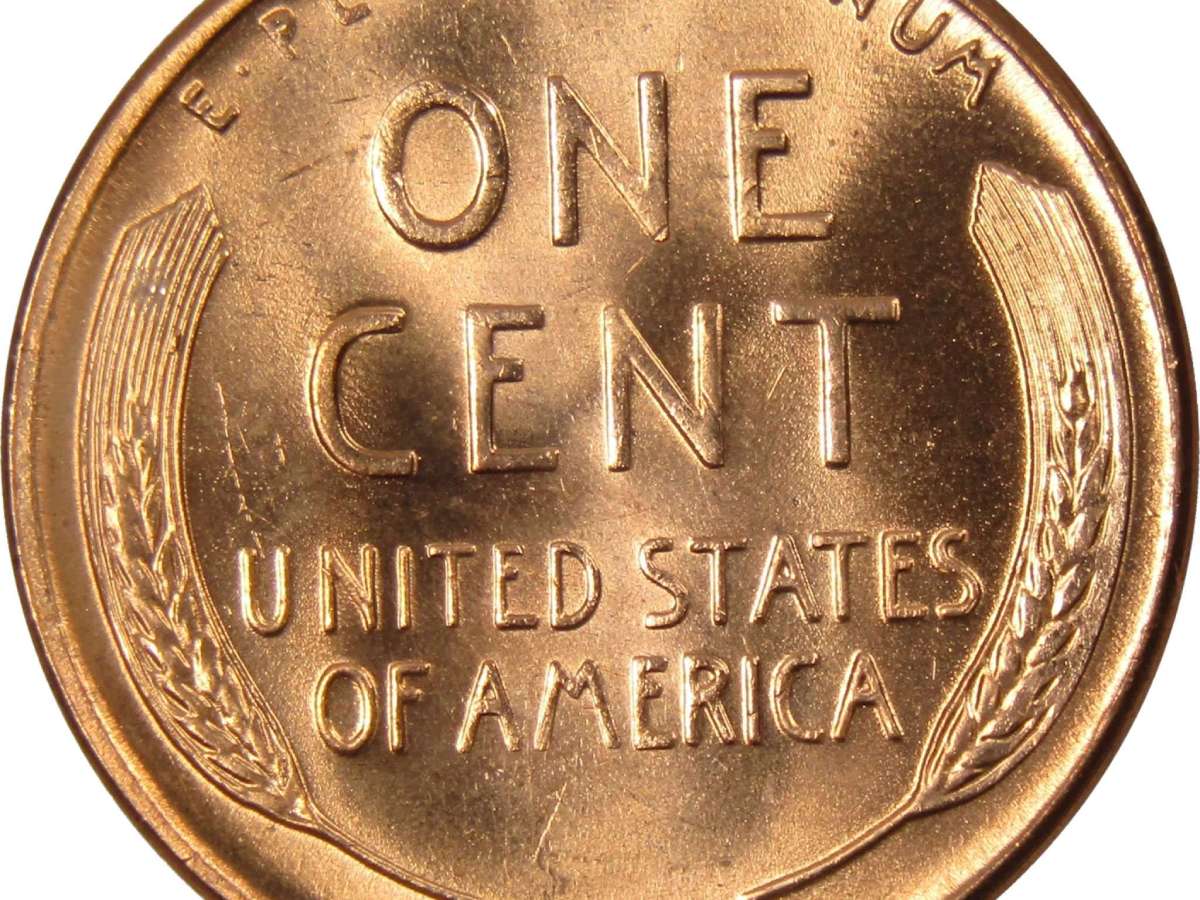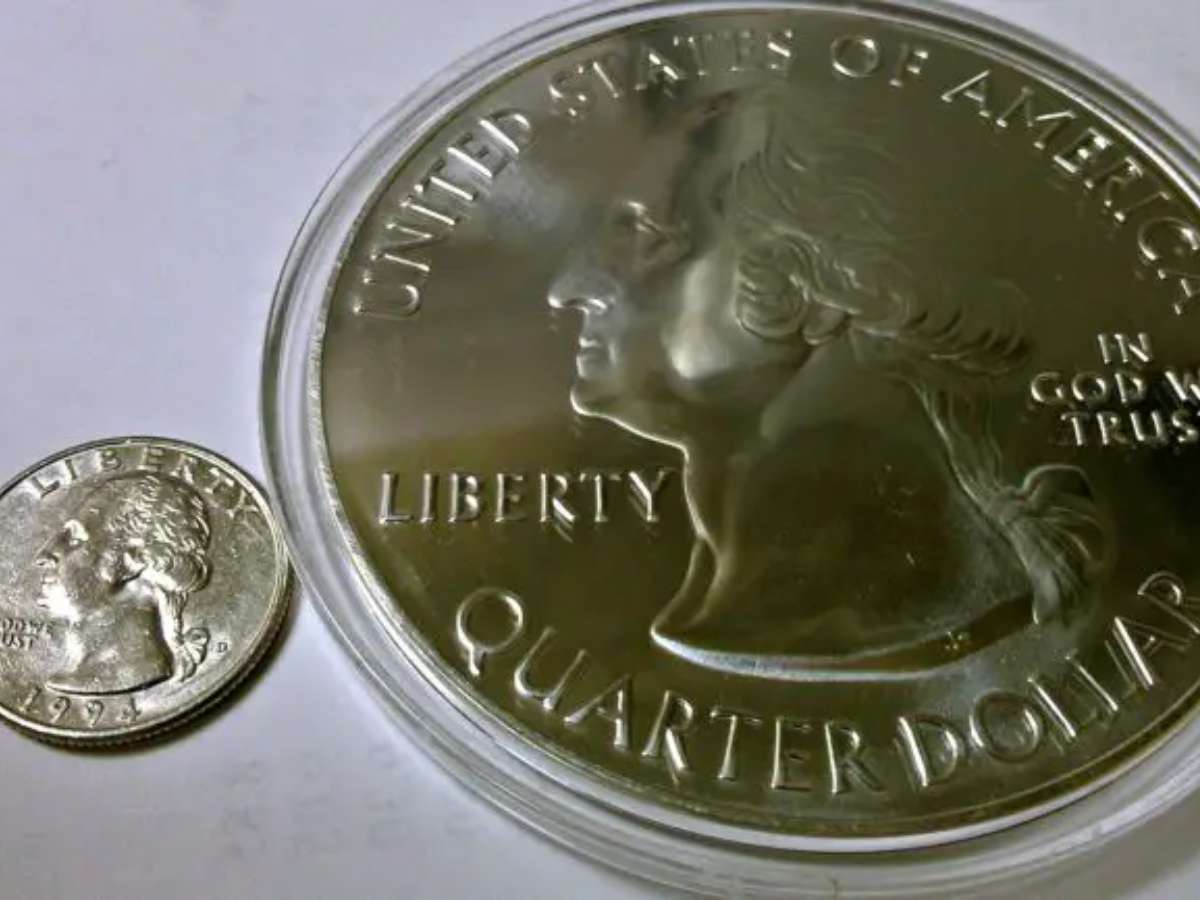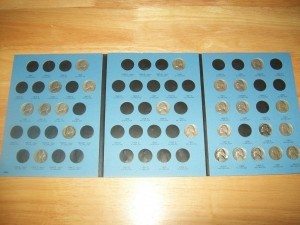 Jefferson nickels have been around since 1938.
Jefferson nickels have been around since 1938.
While they have been serving the public since the last days of the Great Depression, they remain one of the easiest and least-expensive coin sets to complete.
In fact, it’s entirely possible to actually complete a Jefferson nickel collection simply by looking for all the coins from pocket change.
Sound easy? Well, it’s not quite as simple as 1-2-3, but because the Jefferson nickel has seen few changes over its time, many non-coin collectors haven’t paid much attention to the coin. This is to your advantage as a coin collector, because many of the older dates are still floating around in circulation. Even scarce dates still occasionally pop up.
So how do you go about completing a collection of Jefferson nickels? A keen eye, searching each and every nickel that passes through your hands, and doing a little bit of extra leg work will help you complete – or at least nearly complete — your Jefferson nickel collection right from your pocket change!
The Scarce Dates
The first step in knowing what to look out for in your spare change is finding out what dates you’ll need for your Jefferson nickel coin collection.
Jefferson nickels were first made in 1938 – the last year of the Buffalo nickel, by the way.
The dates listed below will most probably be the toughest for you to locate in pocket change. In fact, there’s a chance you’ll end up simply buying these coins from a coin dealer before all is said and done, because these coins can be extraordinarily difficult to find.
Why are they so tough to find in loose change? Less than 15 million (and in some cases less than 5 million) were made of each. However, they do still turn up in circulation!
The values to the right are the typical retail values for each coin in average circulated grades:
- 1938-D $2
- 1938-S $3
- 1939-D $10
- 1939-S $2
- 1942-D (regular nickel) $1
- 1946-S 50 cents
- 1948-S 50 cents
- 1949-S 75 cents
- 1950 $1
- 1950-D $15
- 1951-S 75 cents
- 1955 50 cents
As you can see, even if you wound up buying these coins from a coin dealer for full retail price, they are still relatively cheap. – at least in circulated grades.
Wartime Nickels
You’ve probably heard about Wartime Nickels. What are they? They are Jefferson nickels that were made from a metal composition of:
- 56% copper
- 35% silver
- 9% manganese
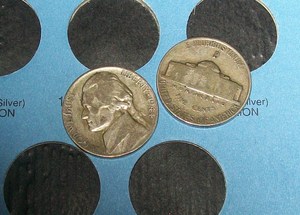 Why the change in metal? Because nickel was being saved for use in fighting in World War II.
Why the change in metal? Because nickel was being saved for use in fighting in World War II.
You can tell a silver Wartime Nickel from a regular nickel by looking at the reverse (back) of your nickels. If you see a large mint mark over the dome of Monticello (the building on the reverse of Jefferson nickels), then you have a Wartime Nickel.
Though made of silver, they can still be found in pocket change on a scarce occasion with a bit of searching.
Wartime nickels were made from 1942 through 1945. Regular, non-error varieties are worth about $1 to $2 with current silver prices and if in typical circulated grades.
Westward Journey Nickels
During 2004, 2005, and 2006, the United States honored the bicentennial of Meriwether Lewis and William Clark’s famous cross-country trek to explore our nation’s land from the Mississippi River all the way to the Pacific coast.
Because Thomas Jefferson played a large role in our nation’s western expansion, it seemed highly fitting to honor the 200th anniversary of the Lewis & Clark Expedition on the Jefferson nickel.
There are 4 different reverse designs for the 2004 and 2005 Jefferson nickels.
The original profile of Jefferson is featured on 2004 nickels. A special portrait of Jefferson appears on 2005 nickels.
The Monticello design resumed in 2006 with a new, permanent portrait of Jefferson appearing for the first time on 2006 nickels.
Here’s a rundown of the different designs on the 2004 through 2006 nickels:
- 2004 Louisiana Purchase & Peace Medal theme
- 2004 Keelboat
- 2005 American Bison
- 2005 Ocean In View
- 2006 New Permanent Jefferson Portrait & Monticello resumes
Circulated examples of these coins are worth 5 cents each. Uncirculated specimens are generally valued from 10 to 20 cents.
Storing Jefferson Nickels
Keeping all your Jefferson nickels safe and sound – and organized – is easy and cheap to do. There are plenty of high-end Jefferson nickel coin albums costing $20 to $40.
However, Whitman sells popular, 3-panel cardboard coin folders suitable for holding most Jefferson nickel collections. Each costs less than $5 to buy. Coin folders can be found at most any coin dealer or major bookstore.
How Much Will The Collection Cost… And Be Worth Upon Completion?
Here’s the burning question: how much is a complete collection of Jefferson nickels worth? The answer depends on the quality and extent of your Jefferson nickel coin set.
If you’re looking to assemble a complete run of Jefferson nickels from pocket change (or in worn grades), then most the value of the set will be in the Jefferson nickels made from 1938 to about 1964. In fact, a circulated set of worn Jefferson nickels from 1938 to 1964 is presently worth around $40 to $50 (more or less).
All Jefferson nickels made since 1965 are worth only face value if in worn grades. Most coin dealers, however, will not pay any more than 5 cents to 10 cents for most well-worn, common-date Jefferson nickels from the 1950s and early 1960s.
If you’re going to add proof Jefferson nickels to your coin set, the value goes up significantly. It’s common to include proofs from 1968 to the current date in complete coin sets. The proof Jefferson nickels alone will add at least $100 to $125 in the value of your Jefferson nickel set.
There are also several noted Jefferson nickel coin errors. While most sets don’t include such coins, they do add value to collections. The exact value depends on the number and type of errors you choose to include to your collection.
Finding The Coins
Aside from the usual checking of change that goes through your hands, be sure to take the extra step of buying and looking through bank rolls of Jefferson nickels. This will provide you the best chance of finding the coins you need because you’ll have the chance to look at many Jefferson nickels at once.
A standard roll of 40 Jefferson nickels will cost you just $2 to buy from your bank. Whatever coins you don’t need can simply be exchanged at your bank or a store for more coins, cash, or for buying whatever you need.
Think about it this way – for a sum of less than $10 in face value you can complete a regular-issue collection of Jefferson nickels.
Yes, this will be a challenge for sure, but it may be one of the most exciting pocket change coin collecting goals you’ll have set out to accomplish yet!


